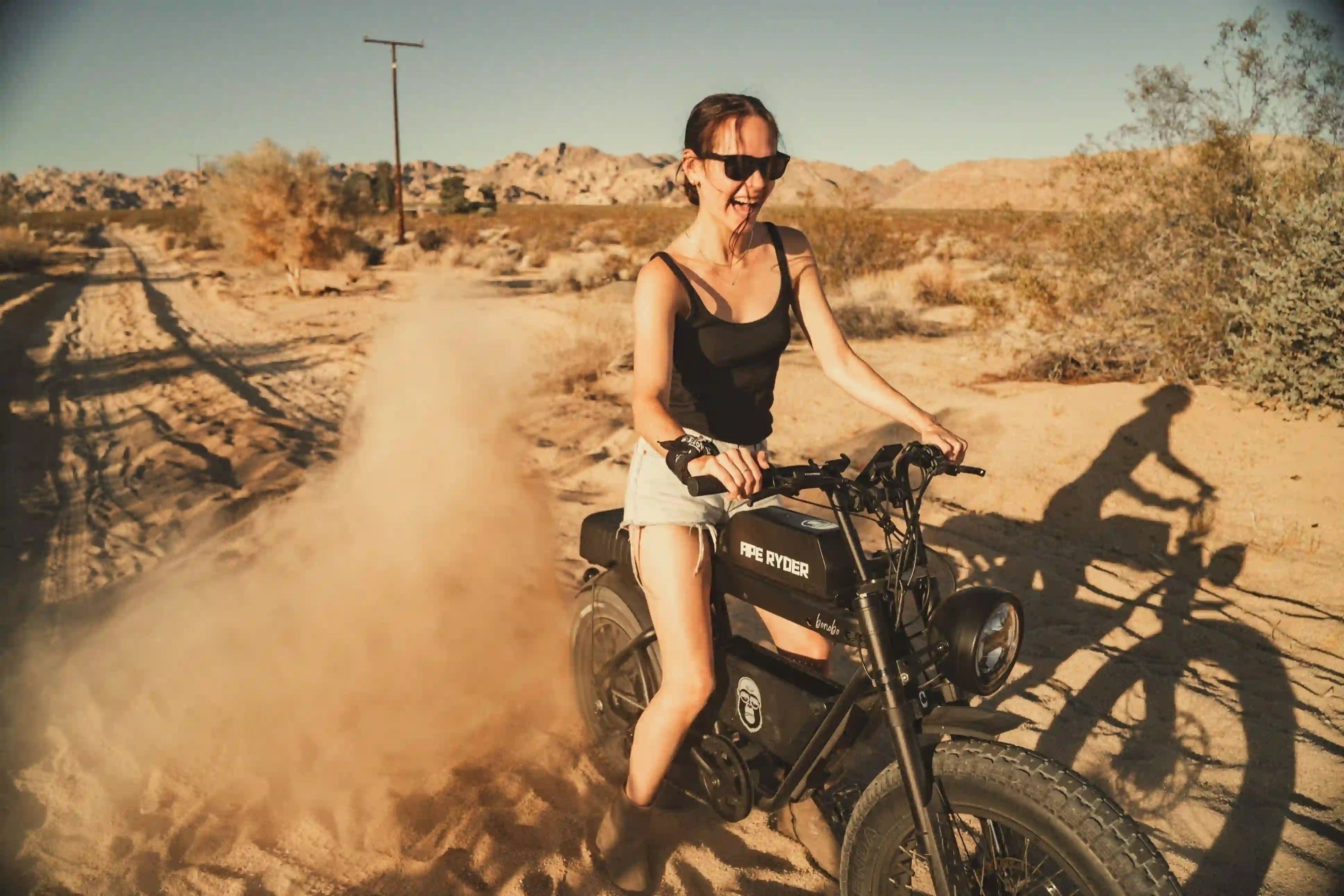E-bike weight is critical for performance, handling, and riding pleasure. Knowing these various factors will help you make an informed decision that best suits your needs and riding preferences. Right from the materials used in the construction to the type of motor and battery, several factors contribute to the weight of an e-bike. Of course, this affects your ride, but it may be one of the most important factors in considering the right e-bike for you.
Don't forget to check out our all e-bikes after reading the blog post!
Lighten Your Ride: Understanding E-Bike Weight and Its Impact
E-bikes have stormed the cycling world with a perfect blend of exercise and electric assist. Still, there comes one very central factor most generally overlooked: their weight. If you are either an experienced cyclist or a debutant, knowing how much your e-bike weighs is very critical. This blog will delve deep into the factors affecting the weight of e-bikes and how it could directly impact your ride.
Average E-Bike Weights
Though most e-bikes will fall within an average weight range, from about 40 to 70 pounds (22-25 kilograms), the weight can vary significantly in some based on the type of bike and its various components. Most of the lighter ones, like folding e-bikes or those oriented towards commuters, weigh at the lower end of this spectrum, while most of the heavy ones, like sturdy mountain e-bikes with big batteries and heavy frames, remain close to or even top the higher limit. It is important to be aware that an e-bike's weight may affect handling, storage, and ease of transport when choosing an e-bike. For example Bonobo and Gibbon are about 23 kilograms.
Components that Affect E-Bike Weight
Several key components add to the overall weight of an e-bike. These are the motor, the battery, material used in the frame, and other accessories such as suspension systems and gears. Usually, the motor and the battery are the heaviest parts. If one removes these, there would not be any electric assistance, so it is a required evil.
Motor Type and Weight
The three primary e-bike motor designs are: friction-drive motors. Hub motors are generally heavier and ideally suited for level terrains; mid-drive motors are lighter, more balanced, and more efficient to use, which is the reason for their popularity with mountain e-bike riders. The last is friction-drive motors, making a bit of light weight to them. But these are the least around anymore.
Battery Size and Density
Most e-bikes have lithium-ion batteries, which contribute to its lightness and efficiency. The size of the battery, however, can add a lot of extra weight. With a more extended mile range comes an increase in pounds of weight for the batteries. Advanced batteries use greater energy densities to reduce weight without losing range.
Frame Material
The four most common materials used to make e-bike frames are steel, aluminum, carbon fiber, and titanium. Steel is strong but heavy; aluminum provides a good weight/durability ratio. Carbon fiber and titanium allow for lightness, though their price may be too high. Your choice will therefore depend on your budget and riding style.
The Impact of E-Bike Weight on Performance
There are essential variables on the e-bike’s weight. Most important variables are speed, batteries, and the user’s weight. On the other hand, heavier e-bike might need to use more power to achieve same speed levels with other e-bikes, that causes draining the battery much faster.
Speed and Acceleration
An e-bike that is light will accelerate to high speeds with much ease. This is particularly the case when commuting within the city, where quick starts and stops are involved. On the other hand, heavier bikes sustain much better momentum, and this may be an added advantage in long and steady rides.
Battery Life and Range
The weight of the e-bike, too, impacts its battery life and range. The heavier the bike, the more energy it will require to be moved, hence reducing the effective range of the battery. This can be avoided by fitting the e-bike with an efficient motor system while ensuring a light frame that allows one to stretch the life of the battery long enough to extend rides without a recharge.
Handling and Maneuverability
Handling and maneuverability are very important aspects, especially for off-road and mountain biking. With lighter e-bikes, it becomes easier to handle and lift over obstacles. On the other hand, heavy e-bikes stay more stable and cannot be easily harassed by side winds or unevenness of road or ground.
Choosing the Right E-Bike Based on Weight
Weight is another principal factor when choosing the right e-bike for your needs. Light models would mostly be preferred by commuters to transport and store them easily, while the same would be true on the other side for more adventurous riders who prefer heavier bicycles to provide extra stability and higher battery capacity.
Commuting and Urban Use
An e-bike light enough to be a practical tool for daily commutes is appreciated. It can give one the ability to weave through traffic with ease and to store the bicycle in small apartments or offices. This feature is most beneficial to city dwellers, especially folding-frame models.
Mountain Biking and Off-Road Adventures
It becomes a balancing act when dealing with rugged terrains. An e-bike that is marginally heavier due to the robust frame and larger battery will not compromise too much on handling.
Fitness and Leisure Rides
If fitness is the main interest, then a lighter e-bike provides one with a more challenging and rewarding workout. It encourages more pedaling and less reliance on the motor, thus assuring that one can meet fitness targets but still have electrical support when required.
How to Manage E-Bike Weight
It should not be difficult to keep the weight of your e-bike under control if you are smart about components and accessories. Whenever possible, use the lightest material available, keeping in mind the inverse relationship between size and weight of the batteries. Here are some pointers for keeping your e-bike's weight at bay:
• Use parts made of light materials. For instance, go for an aluminum or carbon fiber frame, but not those made of steel. Choose a mid-drive motor if you need the weight to be distributed centrally.
• Such accessories as baskets, racks, fenders, and the like are very handy, but they all add weight. Stick to accessories that are necessary and consider lightweight options. Streamline your setup to keep dry weight.
• Keep your e-bike in the right condition to get optimum performance from your electric bike. Good tire pressure, a clean bike, and checking all components can provide a better-performing bike, no matter what the weight.
Future Trends in E-Bike Weight Reduction
The innovation never stops in e-Bike industries, as work is continuously being done to reduce weight without affecting overall performance. Improvements in battery technology and material science are leading to lighter yet more efficient e-bikes. Researchers all over the world are working with a range of new materials, such as graphene and advanced composites, to come up with frames that are lightweight but strong. These innovations aim at reducing the weight of e-bikes without a corresponding loss in durability.
Future developments of batteries will increase energy density, providing the same or greater range at a lower weight. Innovations such as solid-state batteries could topple current notions of e-bike design. The kind of integration of motor and battery systems into the frame allows for proper weight distribution for both performance and aesthetics. In fact, this trend is already materializing across high-end e-bike brands.









Leave a comment
All comments are moderated before being published.
This site is protected by hCaptcha and the hCaptcha Privacy Policy and Terms of Service apply.